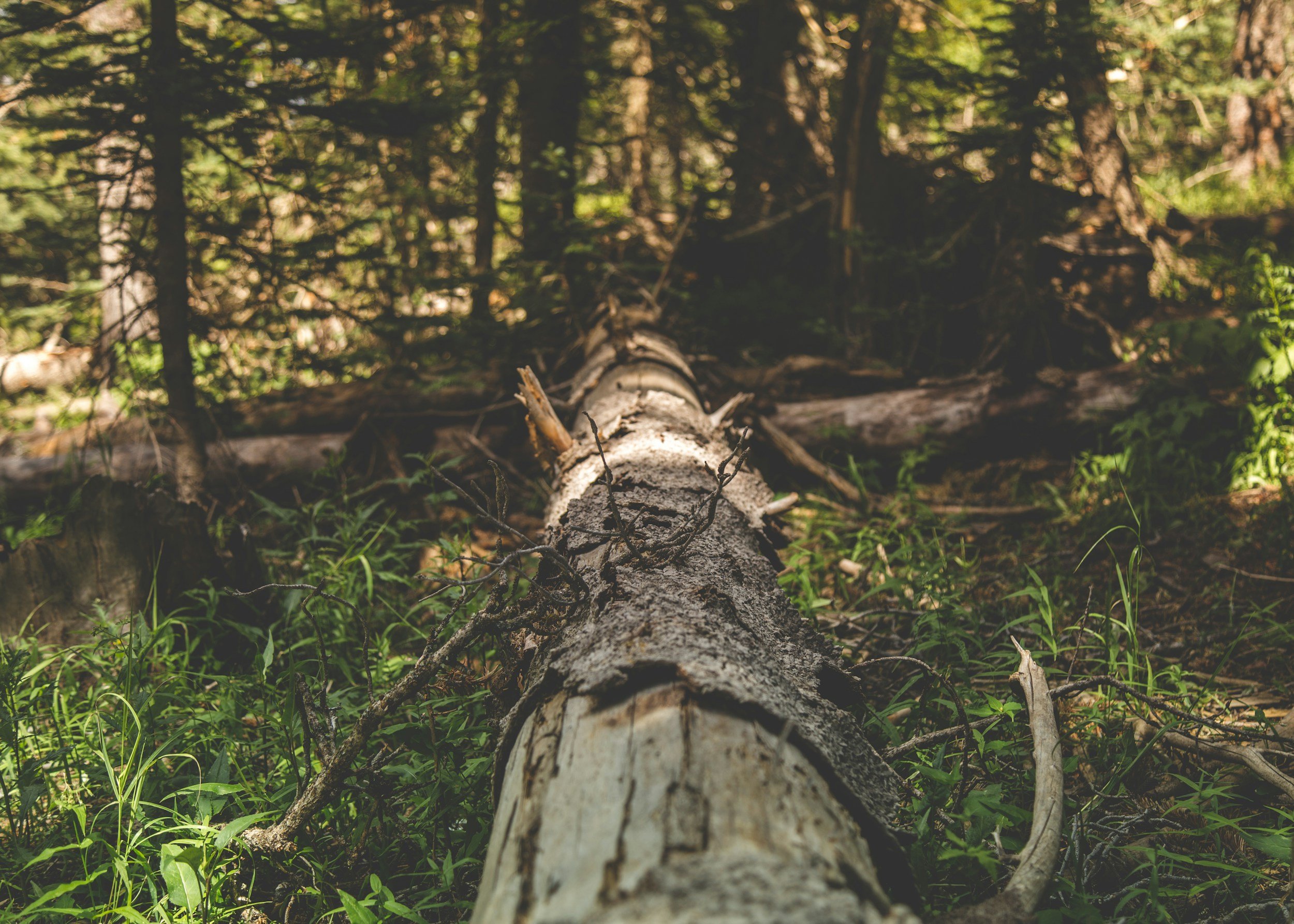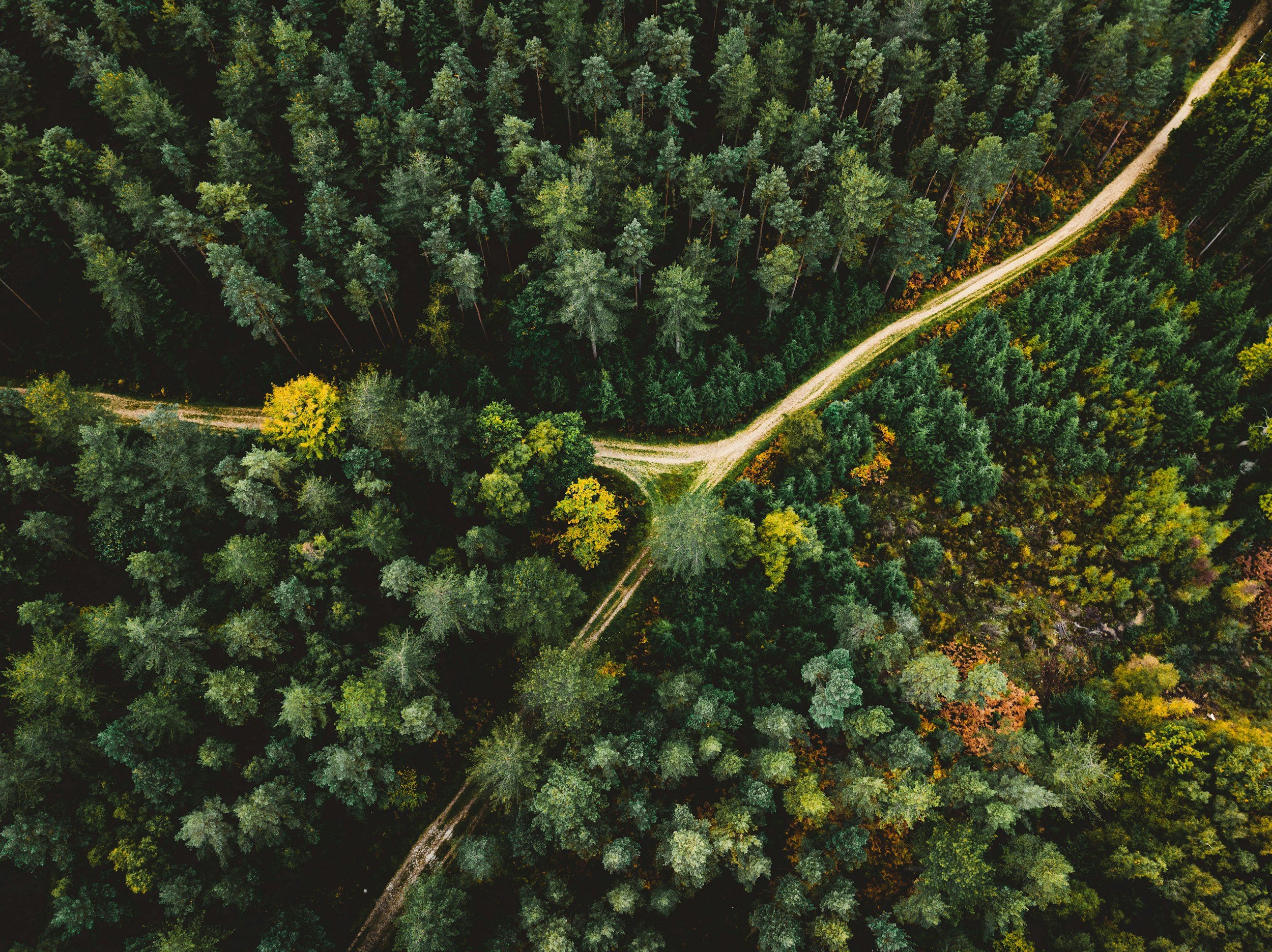
TERMINOLOGY
A
Acre: A unit of land area equal to 43,560 square feet, commonly used in the U.S. to measure land.
Agroforestry: A land management system that combines trees with crops or livestock to improve biodiversity and sustainability.
B
Biodiversity: The variety of plant and animal life in a particular habitat or ecosystem.
Board Foot: A unit of measure for lumber, equal to a board that is one foot long, one foot wide, and one inch thick.
C
Canopy: The upper layer of trees in a forest, forming a dense layer of foliage that provides habitat and shade.
Chip-N-Saw: Medium-sized logs that are processed into both chips for paper production and small lumber pieces.
Clear-Cutting: A logging practice where all the trees in a specific area are cut down at once. This method is often used to harvest timber quickly but can have significant environmental impacts.
Cruise (Timber Cruise): A survey method to estimate the volume, type, and quality of timber in a forest.
D
Diameter at Breast Height (DBH): A standard method of measuring the diameter of a tree at 4.5 feet above the ground.
E
Ecosystem: A community of living organisms and their physical environment, interacting as a system.
Even-Aged Management: A forest management practice where trees in an area are all of similar age and size.
F
Feller Buncher: A motorized vehicle with an attachment that can cut and gather several trees before laying them down.
Forester: A professional who manages and conserves forests and forest resources.
Forest Management: The practice of planning and implementing practices to maintain and enhance the health, productivity, and biodiversity of forests.
Forwarder: A logging vehicle used to carry felled logs from the stump area to a loading site or roadside.
G
Growth Rings: Rings visible in a cross-section of a tree trunk, representing a year of growth.
Group Selection: A selective harvesting method where small groups of trees are cut, creating openings that encourage the growth of new trees.
H
Habitat: The natural environment in which a particular species of plant or animal lives.
Harvester: A large machine that cuts, debarks, and processes trees into logs in a single operation.
Harvesting: The process of cutting down trees and removing them from the forest for use in manufacturing products.
High-Grading: Harvesting only the most valuable trees, often leading to a decline in forest quality.
I
Invasive Species: Non-native species that spread rapidly and cause harm to the environment, economy, or human health.
L
Loader: A machine used in logging operations to load cut timber onto trucks for transport.
M
Merchantable Timber: Trees that are of sufficient size and quality to be sold for lumber or other products.
Mixed Forest: A forest that contains both coniferous (evergreen) and deciduous (leaf-shedding) trees.
P
Patch Cutting: A method of logging small areas within a larger forest to mimic natural disturbances and promote regeneration.
Pulpwood: Smaller-diameter trees or lower-quality wood used primarily for making paper and other pulp products.
R
Reforestation: The process of planting trees on land where the forest has been cut down or destroyed.
S
Sawlogs: High-quality logs large enough to be sawed into lumber for construction and furniture.
Sawtimber: Trees large enough to be cut into lumber for construction or furniture.
Selective Harvesting: Cutting specific trees while preserving the overall structure and biodiversity of the forest.
Silviculture: The practice of managing the growth, composition, and quality of forests to meet diverse needs and values.
Skidder: A vehicle used in logging to pull cut trees out of the forest to a loading area.
T
Thinning: The selective removal of trees in a forest to improve the growth and health of the remaining trees. This helps reduce competition for resources among the trees.
Timberland: Land that is primarily used for growing and harvesting timber.
U
Understory: The layer of vegetation beneath the canopy in a forest, consisting of shrubs and small trees.
V
Veneer Logs: High-quality logs used to produce veneer sheets for plywood and fine wood products.
W
Wildlife Corridor: A strip of natural habitat connecting populations of wildlife separated by human activities or structures.
